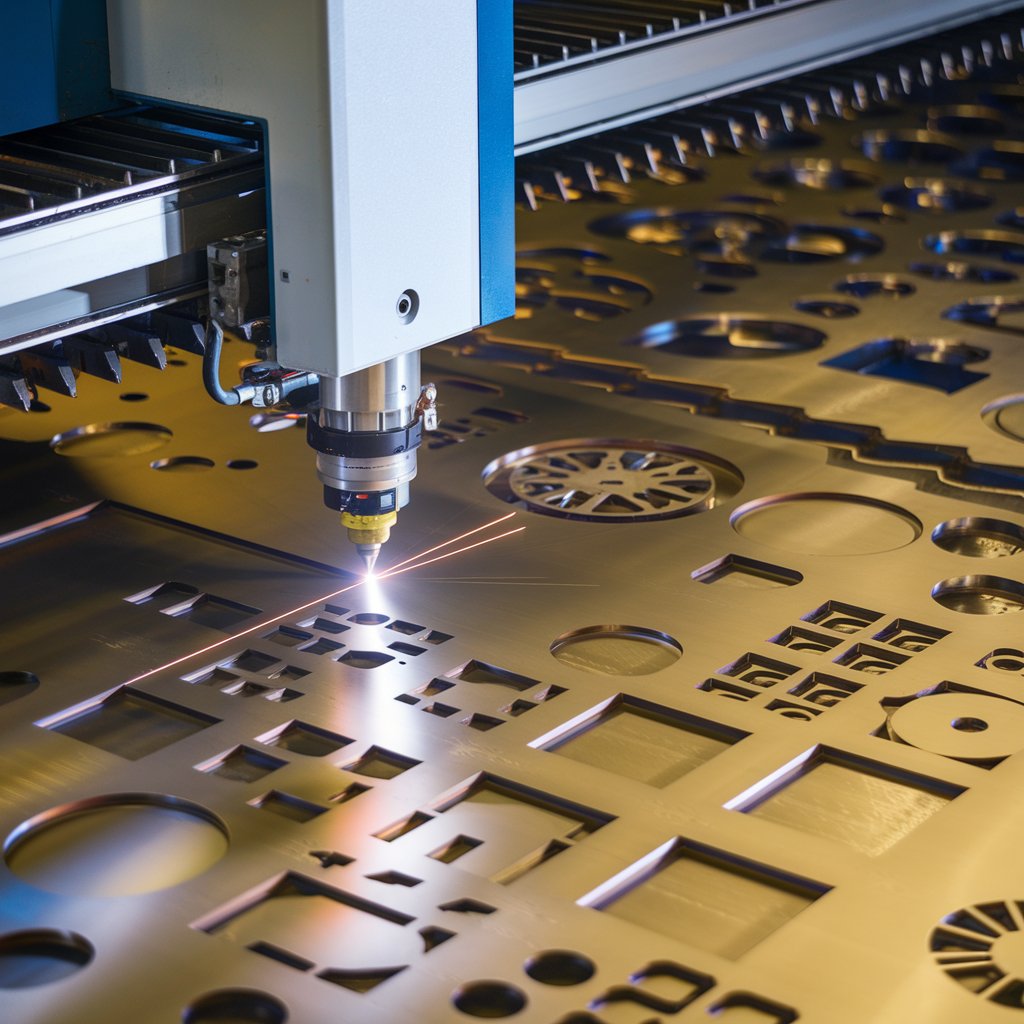Fiber laser technology has emerged as a powerful and versatile tool across various sectors, providing high precision, efficiency, and adaptability. Explores the applications of fiber lasers in different industries, highlighting their transformative impact on automotive, aerospace, medical, electronics, and material processing.
The fiber laser market size to grow from USD 7.7 billion in 2024 and is expected to reach USD 12.8 billion by 2029, growing at a CAGR of 10.8% from 2024 to 2029. The key factors contributing to the growth of the fiber laser industry include the Industrial automation boosts fiber laser adoption for their precision, efficiency, and reliability, growing demand for fiber lasers in medical and healthcare industries, rising adoption of fiber lasers in consumer electronics, expansion of 3D printing and additive manufacturing. Fiber lasers offers high energy efficiency, low maintenance, and long lifespan
Fiber Laser Applications Include :
1. Automotive Industry Uses of Fiber Lasers
In the automotive industry, fiber lasers are increasingly being utilized for cutting, welding, and marking applications. Their high beam quality and precision make them ideal for working with various materials, including steel, aluminum, and composites.
Cutting and Welding
Fiber lasers excel in cutting complex shapes and components with minimal heat distortion, which is crucial in automotive manufacturing. The ability to cut through thicker materials at high speeds reduces production time and enhances overall efficiency. Additionally, fiber lasers are used in welding applications, where their focused energy allows for deep penetration and strong welds, ensuring the structural integrity of vehicle components.
Marking and Engraving
Marking and engraving are essential for branding and traceability in the automotive sector. Fiber lasers provide a non-contact method for marking surfaces, ensuring that the markings are durable and resistant to wear. This capability is vital for compliance with industry regulations and for maintaining quality assurance throughout the production process.
2. Fiber Lasers in Aerospace Manufacturing
The aerospace industry demands the highest levels of precision and reliability, making fiber lasers an ideal choice for various applications. Their ability to operate in challenging environments while delivering consistent performance is invaluable in this sector.
Precision Cutting
Fiber lasers are employed in cutting intricate components for aircraft, including structural parts and engine components. The ability to maintain tight tolerances is essential in aerospace manufacturing, where even minor deviations can have significant consequences.
Additive Manufacturing
In addition to traditional cutting and welding, fiber lasers are increasingly being used in additive manufacturing processes, such as selective laser melting (SLM). This technique allows for the production of complex geometries that are difficult or impossible to achieve with conventional methods, contributing to lightweight designs and improved fuel efficiency.
Download PDF Brochure @
https://www.marketsandmarkets.com/pdfdownloadNew.asp?id=87036569

3. Medical Applications of Fiber Laser Technology
Fiber lasers are revolutionizing the medical field by providing precise and minimally invasive solutions for various procedures. Their versatility is evident in applications ranging from surgery to diagnostics.
Surgical Procedures
In surgery, fiber lasers are used for cutting and coagulating tissue. Their precision reduces damage to surrounding tissues, leading to shorter recovery times and improved patient outcomes. Applications include laser lithotripsy for kidney stones and laser-assisted cataract surgery, among others.
Diagnostic Tools
Fiber lasers are also utilized in diagnostic equipment, such as optical coherence tomography (OCT). This technology enables high-resolution imaging of tissues, aiding in early detection of diseases and facilitating more accurate diagnoses.
4. Role of Fiber Lasers in Electronics Production
The electronics industry relies heavily on fiber lasers for manufacturing processes that require high precision and minimal thermal impact. Their applications range from cutting and drilling to marking components.
Micro-Machining
Fiber lasers are particularly effective in micro-machining applications, where they can cut and drill small holes in delicate electronic components without causing thermal damage. This capability is crucial for producing printed circuit boards (PCBs) and other intricate electronic devices.
Laser Marking
In electronics production, fiber lasers industry are commonly used for marking components with serial numbers, logos, and other identifying information. The high speed and quality of fiber laser marking ensure that markings are clear and permanent, which is essential for traceability and quality control.
5. Fiber Lasers for Metal and Material Processing
The versatility of fiber lasers extends to a wide range of metal and material processing applications. Their ability to cut, engrave, and weld different materials makes them indispensable in various manufacturing environments.
Metal Cutting and Welding
Fiber lasers are highly efficient in cutting metals, including stainless steel, aluminum, and copper. Their speed and precision lead to reduced waste and improved efficiency in production. Additionally, the strong welds produced by fiber lasers ensure durability and strength in fabricated parts.
Material Engraving
Engraving with fiber lasers allows for high-quality surface finishes on various materials, including metals, plastics, and ceramics. This capability is utilized in industries ranging from automotive to jewelry, where detailed and precise markings are essential for branding and aesthetics.
Fiber laser companies is transforming multiple industries by providing high precision, efficiency, and adaptability in various applications. From automotive and aerospace manufacturing to medical procedures, electronics production, and material processing, fiber lasers are proving to be invaluable tools that enhance productivity and quality.
As industries continue to evolve and embrace advanced manufacturing technologies, the role of fiber lasers is expected to expand further, unlocking new possibilities and driving innovation across diverse sectors. The future of fiber lasers is bright, with ongoing advancements promising even greater capabilities and applications
